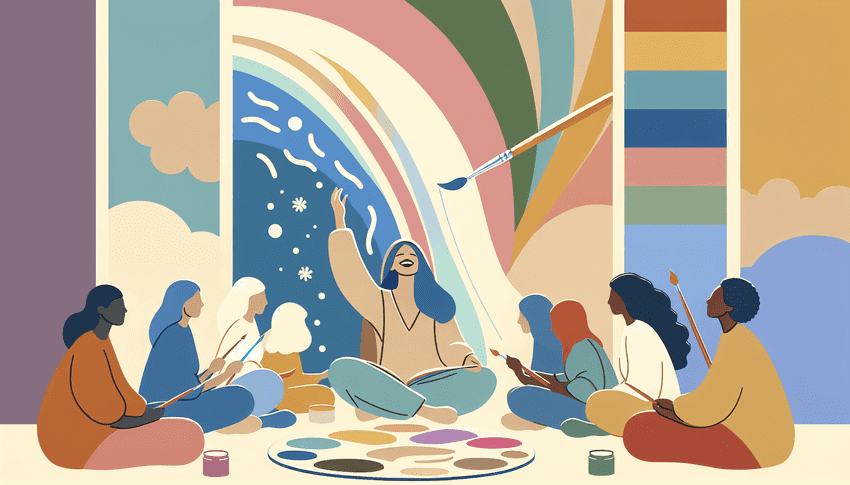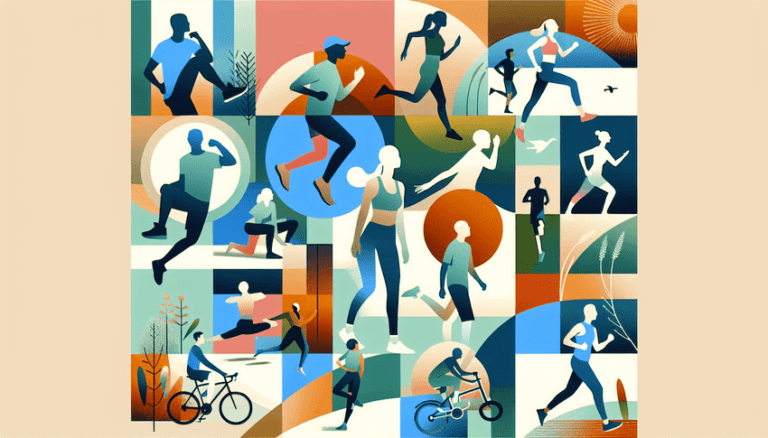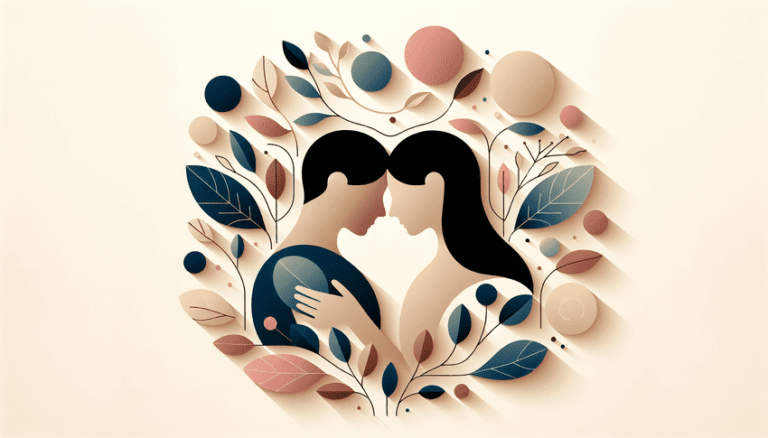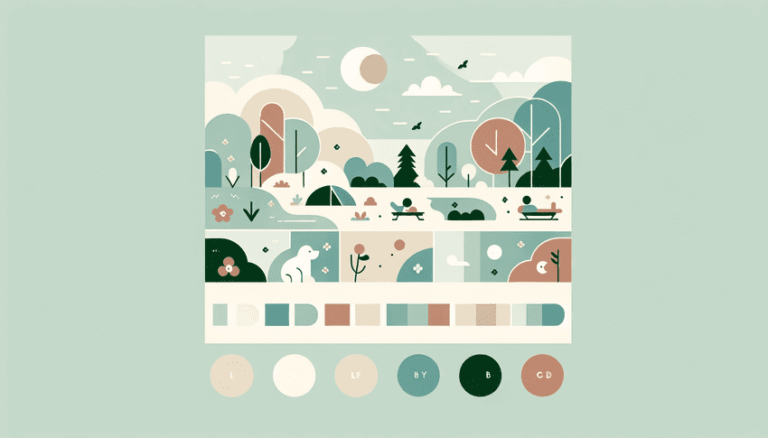Table of Contents
The Science of Art Therapy

Foundations of Art Therapy in Positive Psychology
Art Therapy, a vibrant and transformative practice, aligns seamlessly with the scientific realm of Positive Psychology, serving as a conduit for personal growth, emotional resilience, and the attainment of happiness. This synergy is rooted in the fundamental tenet that the pursuit of creative endeavors is not merely for aesthetic pleasure but serves as a mechanism for enhancing well-being and fostering self-improvement.
The Role of Art Therapy in Cultivating Positive Emotions
Art Therapy, much like Positive Psychology, recognizes the significance of emotions in our overall well-being. Where Positive Psychology seeks to enable individuals to flourish by nurturing positive emotions, Art Therapy provides the tools to express and process these feelings concretely. I recall a poignant example in my practice where a young man grappling with grief found solace in painting. As he swept the brush across the canvas, he not only faced his loss but also discovered moments of peace and even joy amidst the sorrow.
- Self-expression: Art Therapy facilitates the articulation of inner experiences that might be difficult to verbalize, thereby contributing to emotional catharsis and self-understanding.
- Stress Reduction: Engaging in artistic activities has been empirically shown to lower stress levels, akin to the relief one might find in meditation or mindfulness practices endorsed by Positive Psychology.
- Resilience Building: By confronting challenges within the creative process, individuals cultivate resilience, an aspect highly valued in the positive psychological framework.
Strengthening the Self through Creative Exploration
Another cornerstone of Positive Psychology is the concept of self-improvement and personal strengths. Art Therapy echoes this aspect by enabling individuals to explore and sharpen their unique talents and capacities. In one study, participants who engaged in regular creative activities not only bolstered their artistic skills but also reported increased self-esteem and a greater sense of personal accomplishment – outcomes that resonate deeply with Positive Psychology’s aims.
To integrate Art Therapy effectively into one’s journey towards well-being, consider the following practical steps:
- Intentional Practice: Approach Art Therapy with specific goals, such as anxiety reduction or emotional expression, to align with Positive Psychology’s principle of intentional activities for happiness.
- Reflective Process: Use the creative process as a means to reflect on one’s life experiences, reinforcing the Positive Psychology practice of savoring and gratitude.
- Community Connection: Participate in group Art Therapy sessions to foster social support networks, enhancing the collective aspect of happiness explored in Positive Psychology.
In conclusion, Art Therapy undoubtedly offers a multifaceted approach to engendering happiness, mirroring and magnifying the principles laid out by Positive Psychology. Its evidence-based benefits in promoting emotional well-being, building resilience, and nurturing personal growth position it as an invaluable tool in the quest for a fulfilling and joyful life. As we continue to uncover the profound connections between creativity and happiness, Art Therapy stands out as a testament to human potential and the transformative power of positivity.
Art Therapy and Mindfulness
The union of Art Therapy Benefits and the practice of mindfulness presents a meditative pathway to enhance our well-being. The act of creating art, for instance, isn’t merely about the finished product; it’s a process that encourages presence and self-expression. When we merge this creative journey with mindfulness, we forge a powerful tool for Emotional Expression through Art, allowing us to tap into a deeper understanding of ourselves and fostering a Creative Well-being.
Artistic Happiness Techniques, when applied mindfully, teach us to observe our thoughts and emotions without judgment as we create. This practice is akin to meditation, where the rhythmic brush strokes on a canvas or the molding of clay can anchor us in the now, serving as a vehicle for mindful awareness. It is in this flow state that many experience therapeutic relief, often reported in studies on Therapeutic Art Practices.
The Mind-Body Connection in Art-Making In art therapy, there’s a unique mind-body connection that comes into play. As participants engage in the physicality of art-making, their mental focus shifts to the act of creation. The tactile sensations of art materials – the squish of clay or the glide of a paintbrush – demand a heightened sensory awareness that roots us in the present moment. This sensory engagement is a cornerstone of mindfulness, reminding us to experience life as it unfolds, moment by moment.
Reducing Stress with Art and Mindfulness The combination of art and mindfulness also stands as a testament to its stress-reducing effects. Creative Well-being goes hand in hand with reduced anxiety, as confirmed by numerous pieces of research. For instance, a simple activity such as doodling, when paired with mindful breathing, can decrease cortisol levels, much like standard meditation practices.
Enhancing Self-Awareness Through Creation Furthermore, Therapeutic Art Practices often lead to enhanced self-awareness. Art as a medium offers a reflective surface for one’s inner psyche, capturing emotions and thoughts that might be too complex for words. By paying attention to the choices of color, texture, and form, individuals practicing mindful art can gain insights into their subconscious, aiding in personal growth and Emotional Expression through Art.
In a world often dominated by haste and distraction, integrating mindfulness with art therapy presents a valuable opportunity for individuals to reconnect with themselves. Artistic Happiness Techniques promote a state of flow that not only sparks joy but also contributes to long-term emotional resilience. Through these means, art therapy and mindfulness together weave a nurturing environment for the mind and soul, creating an oasis of tranquility in the often tumultuous landscape of our daily lives.
Practical Applications of Art Therapy

Practical Applications of Art Therapy
Art Therapy has emerged as a transformative tool in the realm of mental health treatment, offering both patients and clinicians an alternative pathway to healing. In clinical settings such as hospitals, counseling centers, and rehabilitation facilities, this therapeutic approach integrates the creative process of art-making with psychological treatment, aiding in the exploration of emotions and fostering personal growth.
Art Therapy’s Role in Hospitals
In hospitals, Art Therapy is often employed to help patients cope with stress, pain, and the emotional turmoil of illness and hospitalization. A study published in the Journal of Pain and Symptom Management revealed that cancer patients who participated in art therapy experienced significant reductions in symptoms of pain and anxiety. By engaging in art-making, patients are afforded a non-verbal means of expressing their inner experiences, which might otherwise be difficult to articulate.
- Case Study: A young woman struggling with the isolation of a long hospital stay due to a chronic illness found solace in creating watercolor paintings. Over time, her artwork became a conversation starter with staff and visitors, reducing her sense of isolation and increasing her overall well-being.
- Impact: Art Therapy in this context not only alleviated symptoms of depression and anxiety but also improved the patient’s quality of life by building connections with others.
Art Therapy in Counseling
Counseling centers utilize Art Therapy to assist individuals in processing complex emotions and traumatic experiences. The American Art Therapy Association highlights how art therapy can facilitate self-awareness and self-esteem by providing a safe space for self-expression. Therapists guide clients through artistic creation, helping them to uncover and address underlying issues.
- Case Study: In a counseling center for survivors of domestic violence, Art Therapy was introduced as part of the treatment program. Participants created visual journals, which became instrumental in their journey to recovery, helping them to regain a sense of control and identity.
- Impact: The participants exhibited remarkable improvements in coping strategies and self-concept, illustrating Art Therapy’s capacity to empower and heal.
Art Therapy in Rehabilitation
Rehabilitation facilities frequently call upon Art Therapy to aid patients with physical, emotional, or cognitive impairments. Whether recovering from injury, addiction, or neurological events like strokes, patients benefit from the structured yet flexible nature of art-making. It’s a modality that can adapt to individual needs and abilities, providing both therapeutic value and an enjoyable experience.
- Case Study: Following a stroke, a man found difficulty in expressing himself verbally and turned to Art Therapy. Through the layering of colors and textures in his artwork, he began to process his frustrations and fears about his changed capabilities.
- Impact: This therapeutic engagement not only facilitated his emotional expression but also helped to improve his fine motor skills, demonstrating Art Therapy’s holistic approach to rehabilitation.
The positive impact of Art Therapy on recovery and mental health maintenance is irrefutable, backed by countless case studies and a growing body of academic research. As a form of treatment that respects the complexity of human experience, Art Therapy continues to prove its invaluable role in enriching and advancing the field of mental health.
Art Therapy in Personal Development and Daily Life
Art Therapy, a practice intertwining creativity and psychological well-being, has proven to be a potent tool in the journey towards personal development and happiness. This form of therapy facilitates self-expression, providing a non-verbal outlet for emotions that might be difficult to articulate, making it an accessible technique for enhancing one’s daily life.
Why Art Therapy Enhances Personal Development Engaging in art therapy can lead to a myriad of benefits. It can improve self-awareness, reduce anxiety, and foster resilience, contributing to one’s overall happiness. Through the act of creation, individuals can discover and reconcile emotional conflicts, manage behavior, reduce stress, and increase self-esteem.
- Self-awareness through exploration: Creating art allows individuals to explore their feelings and thoughts, leading to deeper self-knowledge and understanding.
- Anxiety reduction by expression: By expressing oneself through art, one can alleviate feelings of anxiety and find a sense of calm.
- Building resilience via creativity: As individuals overcome the challenges in creating art, they develop resilience that translates to other aspects of their lives.
Art Therapy isn’t confined to the therapist’s office. It permeates through the fabric of daily routines, offering a sanctuary for personal growth and emotional equilibrium.
Art Therapy in Daily Life In a bustling lifestyle where stress often prevails, incorporating art therapy into daily routines provides a much-needed respite. Crafting, painting, or even doodling during breaks can dramatically improve one’s mood and stress levels.
- Morning routine enrichment: Starting the day with a short sketching session can spark creativity and set a positive tone for the day.
- Mindful breaks: Taking mindful breaks to indulge in artistic activities can serve as a reset button, offering mental clarity.
- Emotional journaling: Combining traditional journaling with art therapy by creating visual diaries can potentiate emotional insight and understanding.
Inspiring Examples of Art Therapy in Action Real-life examples showcase the effectiveness of Art Therapy. Consider the story of a banker who struggled with burnout and found solace in pottery classes, which became his haven of tranquility. Or a retired veteran who turned to painting, discovering a channel for expression and coping with PTSD symptoms.
Art Therapy, therefore, serves as a bridge to a richer, more fulfilling life. Embracing one’s artistic side, regardless of inherent talent, allows for an emotional release and builds a robust foundation for self-improvement and contentment. The canvas of life awaits each individual’s brushstroke, signaling a journey towards a masterpiece of personal growth and happiness.
Summary
Art Therapy, a vibrant bridge between creativity and psychological well-being, has cemented its place as a transformative practice within Positive Psychology. Its profound impact on personal development and happiness is especially noteworthy, given that it offers a non-verbal outlet for self-expression and emotional exploration.
Enhancing Emotional Well-being through Art Therapy
The synergy of art and psychology provides a unique way to nurture one’s emotional health. It’s not just about the aesthetic outcome; it’s the act of creation itself that is therapeutic. Art Therapy allows for the articulation of emotions beyond words, paving the way for personal insights and emotional release.
- Expressive pathways: Individuals find new ways to convey complex feelings, fostering emotional clarity and catharsis.
- Stress relief: Much like mindfulness, the act of creating art reduces stress levels, enhancing one’s sense of peace.
- Resilience through creativity: Facing artistic challenges head-on builds resilience, crucial for adapting to life’s ups and downs.
Positive Psychology and Artistic Self-Improvement
The journey to self-improvement aligns seamlessly with Positive Psychology’s tenets. Art Therapy offers a space to explore personal strengths, thereby boosting self-esteem and fostering a sense of achievement.
- Goal-oriented practice: Setting artistic objectives can lead to profound personal growth and satisfaction.
- Meaningful reflection: The creative process encourages introspection, cultivating gratitude and a positive outlook on life.
- Social engagement: Group art sessions provide social connectivity, an essential aspect of emotional well-being.
Art Therapy’s Role in Emotional Intelligence
Emotional Intelligence (EI) is significantly enhanced through Art Therapy. By engaging in artistic endeavors, individuals can identify and manage their emotions more effectively, leading to better interpersonal relationships and self-regulation.
- Insights through creation: Art serves as a mirror reflecting one’s emotional state, contributing to greater EI.
- Empathy in action: Collaborative art projects in educational settings have shown to increase empathy among students.
Nurturing Resilience Through Art
The resilience building fostered by Art Therapy is pivotal in today’s fast-paced world. It offers a method not only for personal introspection but also for cultivating a positive mindset amid adversity.
- Stress-relieving flow: The immersive experience of making art can provide a sense of solace and strengthen one’s ability to cope.
- Visualization techniques: Guided art activities help symbolize and reinforce the concept of resilience.
Given its multifaceted benefits for enhancing EI and resilience, Art Therapy is increasingly incorporated into diverse settings, from clinical to corporate.
Art Therapy in Clinical and Holistic Health Settings
Art Therapy extends into hospitals, counseling, and rehabilitation centers, offering patients and clients an alternative means of expression and emotional support. It aids in stress and pain reduction and can significantly improve the quality of life for those facing health challenges.
- Enhanced communication: Art Therapy provides patients with a voice when words are insufficient.
- Community and support: Sharing art in healthcare settings fosters connections, reducing feelings of isolation.
Real-world Impact of Art Therapy on Personal Growth
The real-world application of Art Therapy is as diverse as the individuals it helps. From professionals seeking relief from burnout to veterans coping with PTSD, Art Therapy is a pathway to restoration and joy.
Art Therapy encapsulates the very essence of what it means to seek a fulfilling and contented life. It reaffirms our capacity to face life’s challenges with creativity and resilience, contributing significantly to the discourse on Positive Psychology and happiness.
FAQ – Art Therapy for Happiness
How does art therapy contribute to improving one’s happiness and mental well-being in practice, and can you provide examples of specific activities or exercises used in this therapeutic approach?
Art therapy fosters happiness and mental well-being by allowing individuals to express and process emotions through creative activities, acting as a non-verbal outlet to uncover and address underlying issues. An example is the ‘Mandala Drawing’ exercise where clients create circular designs that reflect their inner state, promoting mindfulness and self-awareness. Another is ‘Emotion Painting,’ where colors and strokes are used to represent feelings, facilitating emotional release and healing. These artistic expressions can bridge the gap between the conscious and unconscious mind, leading to profound personal insights and a sense of peace.
How does engaging in art therapy activities promote happiness and contribute to improving mental well-being?
Engaging in art therapy activities fosters happiness and improves mental well-being by offering individuals a creative outlet to express emotions, process complex feelings, and find a sense of accomplishment. Through the act of creation, people can explore their inner landscape in a cathartic way, which often leads to reduced stress, anxiety, and depression. Practical examples include the relief and joy a person may feel when painting their struggles into a vibrant canvas, or the tranquility experienced when molding clay into shapes that symbolize personal growth and resilience.
How does engaging in art therapy activities specifically contribute to improving mood and reducing symptoms of anxiety and depression?
Engaging in art therapy activates the creative side of the brain, which can act as a meditative practice, promoting relaxation and helping to reduce symptoms of anxiety and depression. This form of expression can also facilitate emotional release and provide a sense of accomplishment, boosting mood by allowing individuals to explore and communicate feelings that might be hard to articulate with words alone. Through the process of creating art, people can experience a decrease in stress hormones like cortisol, making space for positive emotions to flourish.




